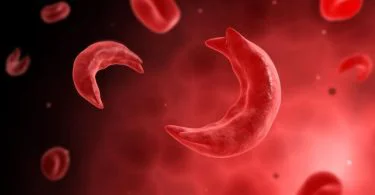Despite some overlap, Human Resources (HR) and the Personnel Department have different organizational functions. The Personnel Department, to use a more conventional term, focuses primarily on administrative duties related to employee management. This can include employment and firing, payroll, administration of benefits, and recordkeeping. It frequently operates reactively, addressing issues as they arise.
In contrast, HR takes a more strategic and comprehensive approach to administering the organization’s human capital. In addition to administrative duties, the organization engages in strategic planning, talent management, and development initiatives. This may involve succession planning, training, and development programs, shaping the company’s culture, and aligning HR practices with its strategic objectives. The HR department operates proactively, enhancing the organization’s overall effectiveness through its employees. HR plays a broader and more strategic role in shaping the organization’s human resource practices to align with its strategic objectives, whereas the Personnel Department is primarily administrative and transactional.
What is Human Resources?
Human Resources (HR) is an essential organizational function that administers all people-related aspects. This includes recruitment, selection, training and development, performance management, compensation and benefits, labor relations, and compliance with employment laws and regulations.
Human Resources is crucial in aligning human capital with the organization’s objectives. It involves planning and implementing policies, practices, and systems that affect employees’ behavior, attitudes, and performance. HR assists in fostering a work environment that is conducive to productivity, creativity, and job satisfaction. HR is primarily responsible for recruitment and employment, ensuring the organization attracts and selects the most qualified candidates. After hiring, HR is responsible for orientation, training, and instituting performance evaluation systems to assess and enhance employee performance.
HR is also responsible for devising competitive compensation and benefits packages, essential for attracting and retaining employees. Additionally, it manages labor relations, working with unions and collective bargaining agreements, as applicable. HR is responsible for administrative and strategic duties to optimize an organization’s most valuable asset – its people.
What is Personnel Department?
The Personnel Department is the traditional name for the department within an organization that manages administrative responsibilities pertaining to employees. It is commonly regarded as the predecessor to the Human Resources (HR) division.
A Personnel Department’s primary functions include a variety of administrative tasks, such as managing employee records, processing payroll, administering benefits, managing recruitment, and ensuring compliance with labor laws. It is predominantly transactional and focuses on the management of employees daily. The Personnel Department is also responsible for handling employee complaints, enforcing disciplinary measures, and handling separations and resignations. Rather than implementing strategic initiatives, it usually operates reactively, responding to issues as they arise.
Although the Personnel Department plays a vital role in workforce management, its scope is typically more limited than contemporary HR departments. Typically, it lacks the strategic elements that HR contributes to an organization, such as aligning people management strategies with organizational objectives, talent development, and fostering a positive company culture. The Personnel Department handles the essential administrative duties associated with employee management, making it indispensable to any organization.
Difference Between Human Resources and Personnel Department
Hiring, salary, benefits, and keeping personnel records are all administrative responsibilities that fall under the purview of the Personnel Department. It’s usually reactive, meaning issues are dealt with as they arise. On the other hand, Human Resources (HR) handles these same sorts of things more strategically. Human resources ensure that an organization’s people strategies align with its objectives. It takes an active role in improving aspects of the business, such as its culture, training programs, and succession strategies. While the Personnel Department takes care of workers’ immediate concerns, Human Resources boosts the company’s productivity by investing in its personnel and encouraging personal and professional development. We’ve compared the Human Resources department to the Personnel department and highlighted the main differences below.
Strategic vs. Administrative
Strategically, HR ensures that the company’s staff is managed to support its overall business objectives. The Personnel Department is more administrative, dealing with day-to-day matters pertaining to employees.
Proactive vs. Reactive
Human resource is a proactive department that aims to promote development and expansion. The personnel department usually reacts to problems as they arise.
Employee Development
Human resources allocate funds to programs that help workers grow professionally. In most organizations, personnel departments don’t place a premium on professional growth for their employees.
Talent Management
Succession planning is an area of talent management that frequently involves human resources. In most cases, personnel departments stay out of this sort of thing.
Company Culture
Human resources is crucial in developing and advancing the company’s ethos. The Personnel Department is less active in this part.
Performance Management
Human resources use performance management systems to assess workers and adjust their methods. The Personnel Department may also have a hand in conducting performance reviews, although its emphasis is typically on something other than helping employees grow professionally.
Change Management
Human resources typically play a role in managing organizational change, such as reorganizations or shifts in strategy. Usually, the personnel department stays out of the way of organizational transformations.
Employee Engagement
Human resources focus on increasing participation from workers, which boosts output and morale. The Personnel Department’s duties are more administrative and less proactive.







